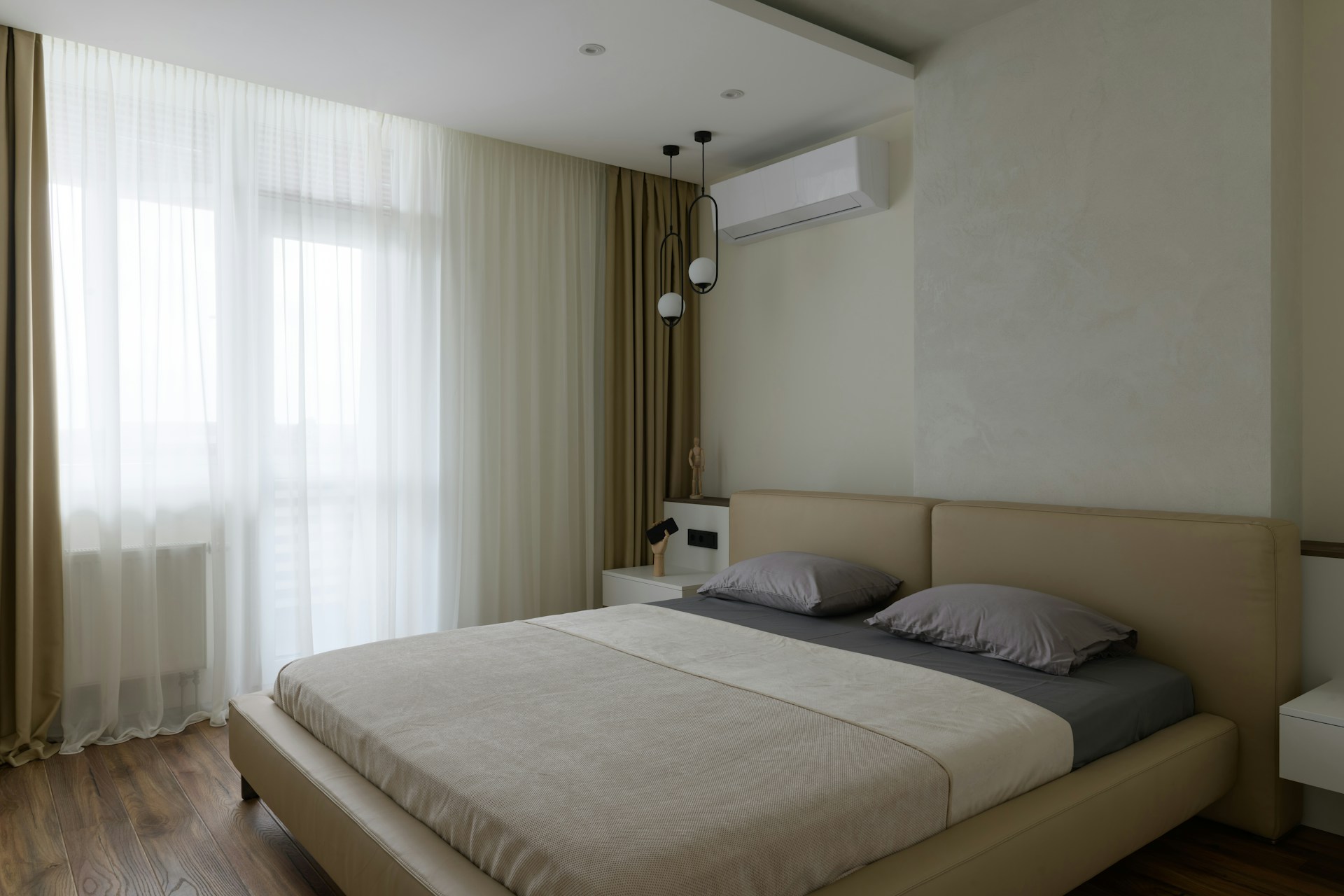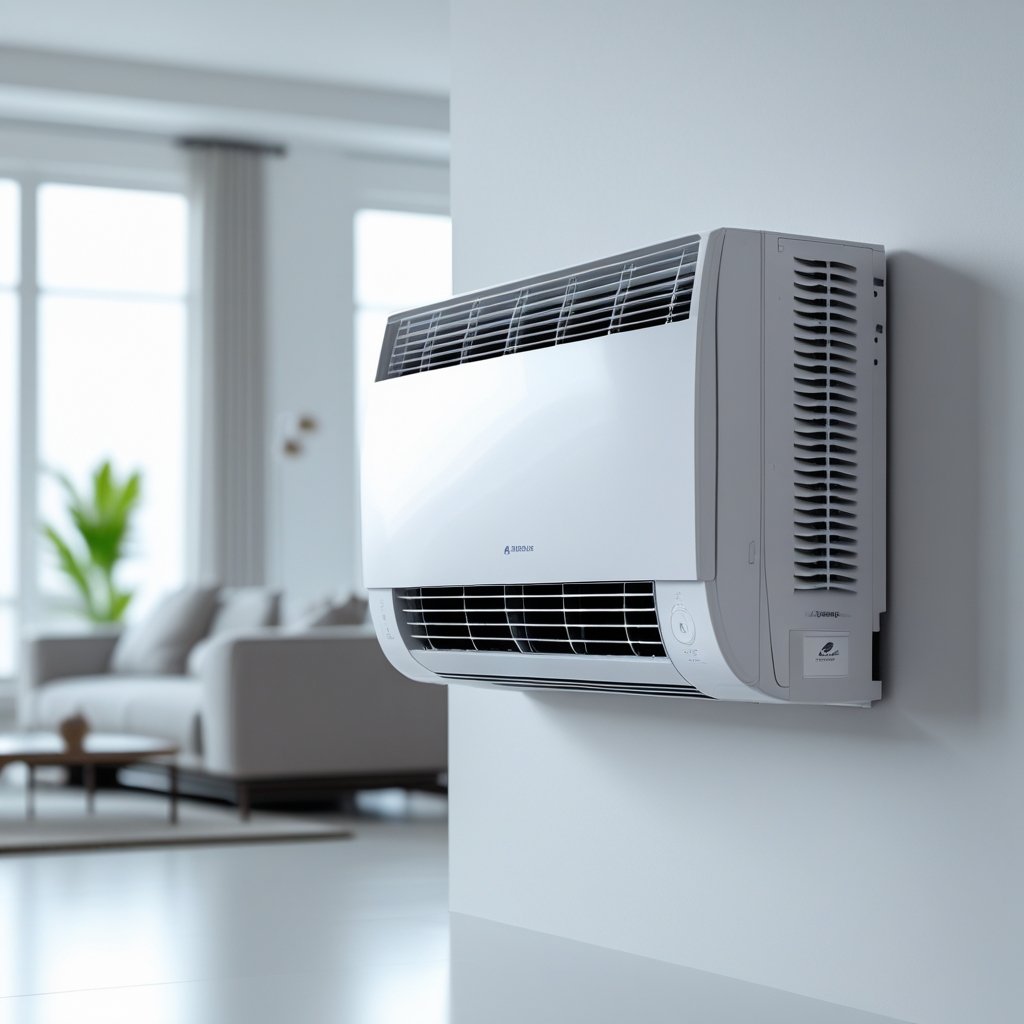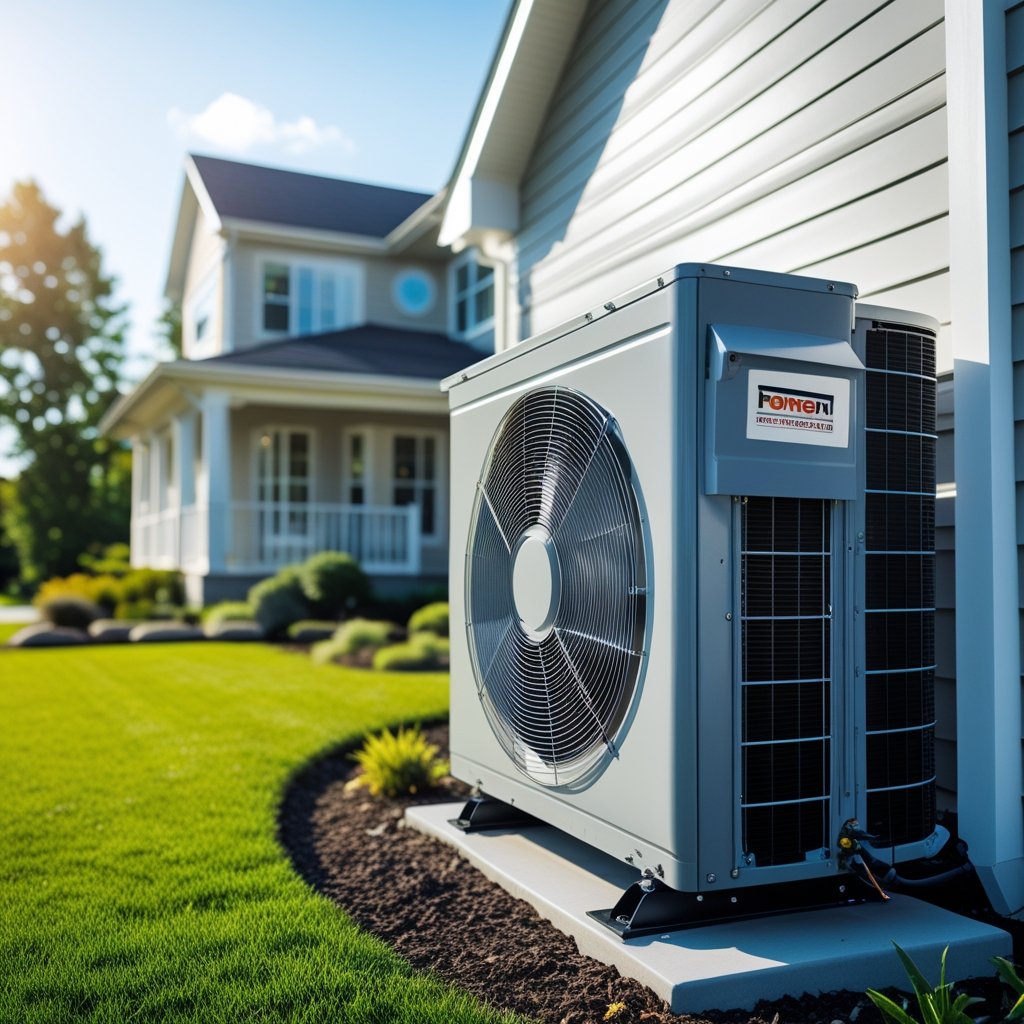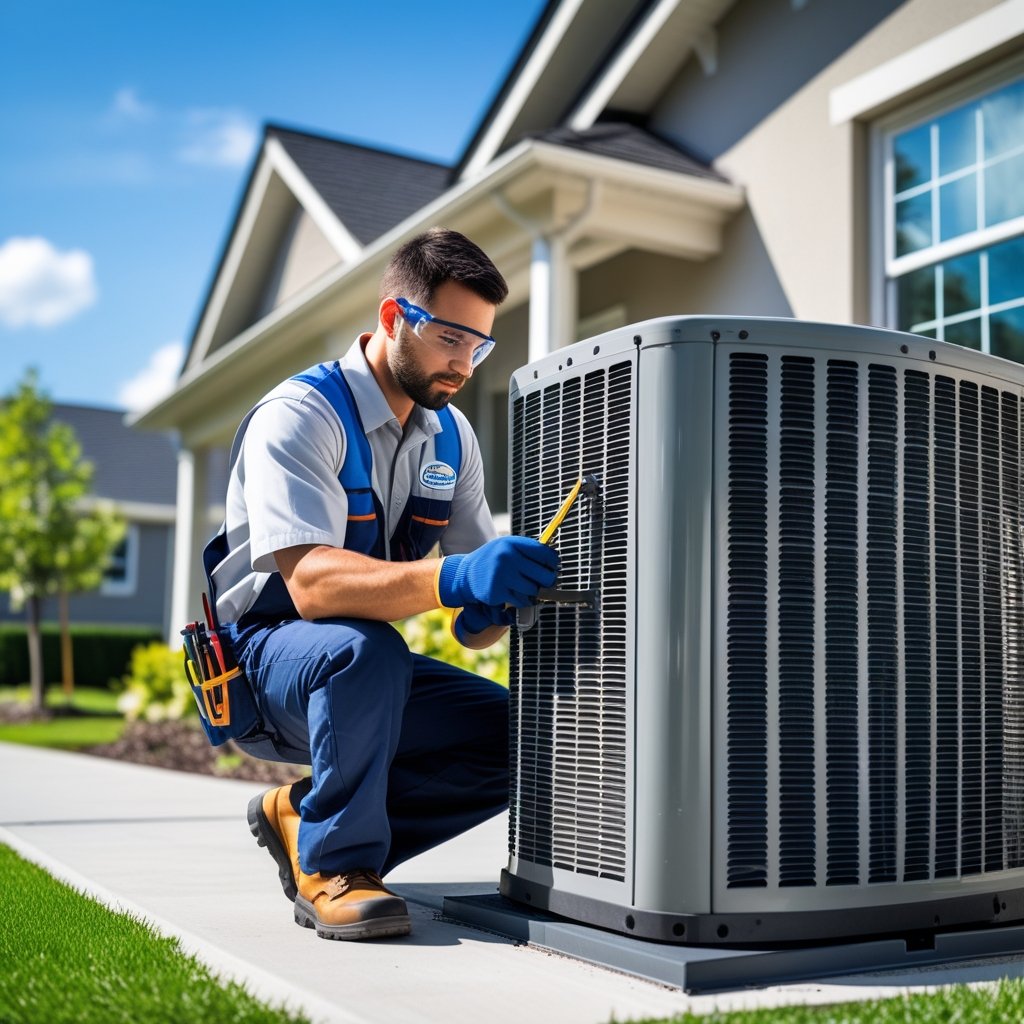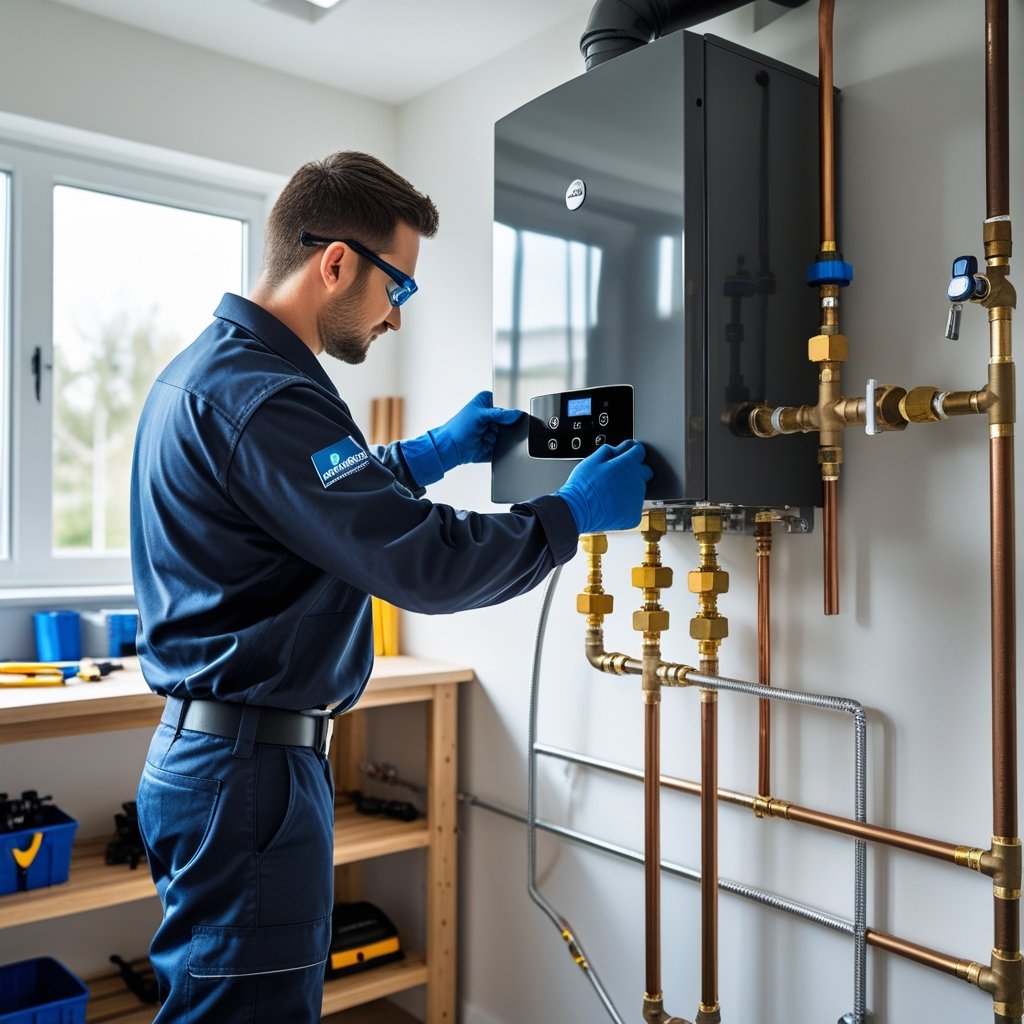Thinking of upgrading your home’s cooling? An A/C mini split system might just be what you need. A mini split system cools your space efficiently and skips the bulky ductwork, which is a lifesaver in homes where running ducts would be a headache or just too pricey. With this setup, you can tweak the temperature in each room, so you’re not cooling the whole house for no reason—and that can mean lower bills.
At Leo Kob Co., we’ve watched plenty of homeowners around South Central Pennsylvania make the switch for the quiet operation and flexible install options. Whether you’re in Lancaster, Harrisburg, or York, a mini split can keep your place comfortable while cutting back on wasted energy. If you already have a heating system, a mini split can work alongside it, or handle both heating and cooling if you go for a heat pump.
Choosing the right mini split and keeping up with maintenance really matters. We’re all about honest pricing and quality work so your system sticks around and runs better. If you’re after a reliable, tailored cooling solution, a mini split’s worth a close look.
What Is an A/C Mini Split System?
An A/C mini split system is a heating and cooling option that keeps your home comfy without the hassle of ducts. You get more control over different rooms, and installation is usually a breeze. It’s no wonder these systems are catching on in South Central Pennsylvania.
How Mini Split Systems Work
Mini splits move heat between indoor and outdoor units to cool or heat your space. The outdoor unit has the compressor and condenser, which handle the heat exchange. The indoor unit blows air over a coil and sends it into the room.
Without ductwork, mini splits dodge the energy loss you see in traditional setups. You can put in a single unit for one room or go big with multiple units across your house. That flexibility saves energy and lets you fine-tune temperatures wherever you want.
Main Components of Mini Splits
Here’s what you’ll find in a mini split system:
- Outdoor Unit: Holds the compressor and condenser.
- Indoor Unit: Usually wall-mounted with a fan and coil to push conditioned air into your room.
- Refrigerant Lines: These connect the indoor and outdoor units.
Some systems come with a remote or app, so adjusting the temperature is super easy. Installing one means mounting the indoor unit and running refrigerant lines through a small hole—way less invasive than traditional HVAC installs.
Common Types of Mini Split Systems
You’ll typically see two types:
- Single-Zone Systems: One outdoor unit to one indoor unit. Perfect for cooling a single room or a small area.
- Multi-Zone Systems: One outdoor unit hooked up to several indoor units. Each room can have its own temperature setting.
Both types can come with heating and cooling. Heat pump models are handy for winters in South Central PA. Whether you want to update a part of your house or add more zones, mini splits are flexible and efficient.
If you’re thinking about installing one in South Central PA, Leo Kob Co. is happy to offer advice and solid service.
Benefits of Installing a Mini Split
Mini split systems let you dial in the temperature exactly how you want, which saves energy and makes things more comfortable. They’re also much simpler and less disruptive to put in than old-school HVAC systems. Flexibility and efficiency are the big wins here.
Energy Efficiency Advantages
Mini splits use less energy than central air, mainly because they skip the ductwork that can leak cool air. The inverter tech inside adjusts the compressor speed to match what you need, so it’s not running full blast all the time.
That can mean lower electric bills, especially if you only cool certain rooms. Homeowners in South Central Pennsylvania often end up saving money in the long run, especially when they snag local energy rebates.
Zoned Climate Control
With a mini split, you can set the temperature for each room or zone. No more wasting power cooling empty spaces. It’s great for families with different comfort preferences or homes with several floors.
Remote or app controls make life easier—you can adjust the settings from anywhere.
Reduced Installation Impact
Installing a mini split is way less invasive than running new ductwork. The system just needs small holes for pipes and wires, so your walls and ceilings stay mostly untouched.
At Leo Kob Co., our licensed pros handle mini split installs with care, making sure your new setup fits in cleanly and doesn’t leave a mess. That means less hassle and a faster path to a comfy home.
Choosing the Right Mini Split System
Picking the right mini split comes down to how big your space is, how many rooms you want cooled or heated, and which brands have the features you’re after. These decisions impact comfort, efficiency, and your budget.
Sizing Considerations
Your mini split has to be the right size. If it’s too small, it’ll struggle. Too big, and you’re just wasting money.
Measure the area in square feet. Here’s a quick cheat sheet:
Square FeetBTU NeededUp to 3009,000 BTU300 - 50012,000 BTU500 - 70018,000 BTU700 - 1,00024,000 BTU
Ceiling height, insulation, and sunlight can change what you need. A Leo Kob Co. tech can help you nail down the right size for efficiency and longevity.
Single-Zone vs. Multi-Zone Units
Single-zone mini splits are for one room or area. They’re straightforward and usually cheaper. Good pick for a bedroom or home office.
Multi-zone units let you connect several indoor heads to a single outdoor unit. Each room gets its own temperature control. This is better if you want comfort throughout the house and don’t want to waste energy on unused rooms.
Think about your home’s layout. Multi-zone costs more upfront but could mean lower bills down the road.
Popular Brands and Models
Go for brands known for reliability and energy efficiency. Look for quiet operation, easy-to-use controls, and solid warranties.
Some brands offer:
- Inverter tech for better energy use
- Air filters to boost indoor air quality
- Wi-Fi for remote control
Leo Kob Co. can recommend models that fit your budget and handle the South Central PA climate. We focus on quality and fair pricing so you get the most from your investment.
Installation Process for Mini Splits
Putting in a mini split takes some planning, a good look at your space, and a choice—do you hire a pro or go DIY? Here’s how to get ready, what to expect, and how long it usually takes.
Site Preparation Steps
Before you start, clear out the area. The outdoor unit needs a flat, stable spot with plenty of airflow. Try not to put it in direct sun or deep shade, since that just makes the system work harder.
Inside, pick wall spots for the indoor units that have easy access to power and aren’t blocked by furniture. Make sure there’s a path for the refrigerant lines to pass through the wall. A clear setup saves time and avoids headaches.
If you’re helping prep, gather tools like a drill, level, and pipe cutter. Our team at Leo Kob Co. does a full walkthrough before install day to check these details.
Professional vs. DIY Installation
You could install a mini split yourself if you’re handy, but most people go with pros for safety and warranty reasons. Licensed installers handle the electrical, refrigerant charging, and system testing—stuff that usually needs special tools and certification.
DIY might look cheaper, but it can void your warranty and mistakes can cost you in efficiency or repairs. If you do go DIY, follow instructions to the letter and check your local codes.
Most homeowners around here trust Leo Kob Co. for expert installs. We make sure everything’s set up right, balanced, and safe.
Expected Installation Timeline
A single-zone mini split usually takes about 4 to 8 hours to install. The timeline depends on your walls, how many units you’re adding, and if there’s extra prep work. Older homes might take a bit longer if wiring or drywall needs attention.
Most installs wrap up in a day. We mount the units, run the lines and wiring, vacuum and charge the system, then test it out.
A good schedule gets your system running fast with minimal hassle. We plan around your home’s needs to keep things smooth.
Maintenance and Care Tips
If you want your mini split to last and work its best, a little upkeep goes a long way. Clean it regularly, check key parts, and get a pro in for checkups when needed.
Cleaning Air Filters
The air filters catch dust, dirt, and allergens. Clean them every 2 to 4 weeks to keep airflow strong and your indoor air fresh.
Just pop out the filters, wash with warm soapy water, and let them dry before reinstalling. If they’re damaged or extra grimy, swap them out for new ones.
Clean filters help your system work less, which saves energy and cuts down on repairs. Got pets or lots of dust? Clean them more often.
Checking Refrigerant Levels
Refrigerant moves heat between the units. If it’s low, your system won’t cool or heat right, and you might see ice or hear weird noises.
Leave refrigerant checks to the pros. Handling it needs special tools and know-how. At Leo Kob Co., our techs can check levels during a yearly service.
If your system’s low, there might be a leak, and that needs fixing to avoid bigger problems and wasted energy.
Schedule for Professional Servicing
A yearly professional tune-up keeps your mini split humming. Best time is before you hit peak heating or cooling season.
Techs will clean coils, check electrical connections, test everything, and top off refrigerant if needed. Catching small issues early saves you from big repair bills.
Booking with a local company like Leo Kob Co. means you get skilled, honest service. We know how the local weather affects your system. Ask about maintenance plans—you’ll get priority and maybe some repair discounts.
Troubleshooting Common Problems
Mini splits are pretty reliable, but sometimes things go sideways. If you notice weird noises, temperature swings, or remote glitches, a little troubleshooting can go a long way.
Unusual Noises or Odors
Clicking, buzzing, or grinding? Could be debris in the fan or worn-out motor parts. Sometimes loose wires or a failing compressor are to blame.
Burning or musty smells usually mean electrical issues or mold in the drain pan or filters. Clean the filters often to keep this in check.
If the sounds or smells stick around, it’s probably time to call in a Leo Kob Co. tech before it gets worse.
Temperature Control Issues
If your mini split can’t hit the set temperature, dirty air filters or low refrigerant might be the culprits. Sometimes sensors are out of whack or blocked, throwing off the readings.
Make sure nothing blocks airflow around the outdoor unit. If you’re getting uneven heating or cooling, you might need a bigger unit or better zoning—something a pro can help with.
Remote Control Malfunctions
If the remote isn’t working, check the batteries first—most of the time, that’s the issue.
Make sure nothing’s blocking the signal to the indoor unit. Wipe the remote sensor if it’s dusty.
Still stuck? Try resetting the remote: take out the batteries, press a few buttons for 10 seconds, then pop the batteries back in. If it’s still not working, the remote or the receiver inside the unit might need fixing.
A little care keeps your remote working and your mini split easy to control.
Cost Analysis of Mini Split Systems
Thinking about a mini split system? The costs can add up, so it’s worth breaking things down. You’ll have upfront expenses, ongoing operating costs, and—if you play your cards right—some savings over time. Knowing what to expect makes it a lot easier to plan (and avoid those “wait, what?” moments).
Upfront Equipment and Installation Costs
Expect to spend somewhere between $2,000 and $5,000 for both the equipment and installation. The total swings based on how many zones you need, the size of the system, and how tricky the install gets.
Installing a mini split isn’t just hanging a unit on the wall. There’s mounting, running refrigerant lines, and setting up the wiring. Labor alone can run you about $1,000 to $2,000 if it’s a straightforward job.
In South Central Pennsylvania, Leo Kob Co. gives clear quotes with no hidden fees. They’re local to places like Lancaster and Harrisburg, and their pricing reflects the work they do.
Operating Expenses
Mini splits run on electricity but use it more efficiently than old-school central air. That usually means your utility bill won’t leave you wincing.
Most systems use 600 to 1,500 watts per hour, depending on how big they are and how hard you run them. If you use yours for 8 hours a day, you might see $30 to $50 per month added to your electricity bill.
Want to save more? Set up your temperature zones thoughtfully and use energy-saving modes when you can. A little regular maintenance goes a long way, too.
Long-Term Savings Potential
Mini splits aren’t the cheapest up front, especially compared to window units, but lower energy bills can pay off in the long run. Many folks see a payback in about 3 to 5 years—not too shabby.
You might also get local or federal rebates, which helps with that initial sticker shock. Over time, reliable performance and fewer repairs mean less hassle.
Leo Kob Co. even offers maintenance plans to help your system last longer and avoid surprise repairs. Investing in a quality mini split can mean steady comfort with fewer budget curveballs.
Comparing Mini Splits to Other A/C Options
Choosing an air conditioning system is honestly a balancing act—cost, efficiency, installation, and how it fits your life. Mini splits, central air, window units… they all have their quirks and upsides.
Mini Splits vs. Central Air Conditioning
Mini splits cool just the rooms you want, no ductwork needed. That can save you money on installation and energy if you’re not cooling the whole house. Central air, on the other hand, uses ducts to cool everything evenly—great for big homes.
With mini splits, you can set different temps room by room. Central air? It’s one temp for the whole house, which can waste energy in unused spaces.
Mini splits typically waste less energy (no duct losses) and often qualify for rebates. Central air does mean more duct cleaning and maintenance, which adds up.
If your home’s duct-free or you don’t want to tear up walls, mini splits are a simpler answer. For whole-house cooling, central air is still a favorite, but the costs—both upfront and ongoing—can be higher.
Mini Splits vs. Window Units
Mini splits are just… quieter. They don’t hog your window, block light, or rattle away at night. The inside part mounts on the wall, and the outdoor compressor stays out of sight.
They also cool more evenly and can often heat, too—so you get year-round use. Heating options are a nice bonus.
You’ll need a pro to install a mini split, but at least you keep your windows clear. Window units? Easy DIY, but usually louder, less efficient, and not great for big rooms.
If you care about looks, energy savings, and peace and quiet, mini splits are hard to beat. Window units do the trick for small, temporary needs and tight budgets.
For installation and service in South Central Pennsylvania, Leo Kob Co. has you covered. Their techs can help you figure out what’ll actually work for your space.
Smart Features and Accessories
Modern mini splits come packed with smart features that make life easier. Many let you tweak settings from your phone, wherever you are. Forgot to turn off the A/C? Just tap the app.
Some models even play nice with Alexa or Google Assistant. Want to change the temp without getting up? Just ask.
Accessories can bump up comfort and efficiency, too:
- Air purifiers inside the mini split help keep dust and allergens at bay.
- Wi-Fi adapters unlock remote control features.
- Thermostat sensors let you monitor and manage temps in different rooms.
At Leo Kob Co., we’ll help you sort through the options and install whatever fits your needs and budget. We’ll even get all those smart features set up so you actually use them.
Using these features can cut energy bills, since you only run the system when you really need it. That’s a win, especially during South Central PA’s muggy summers and chilly winters.
If you’re after a smarter, more convenient way to control your comfort, these upgrades are worth a look.
Environmental Impact
Mini splits generally use less energy than traditional central air, which is good news for your wallet and the planet. They make your home’s electricity use more efficient and shrink your carbon footprint.
Most of these systems use newer refrigerants with lower global warming potential. Still, you’ve got to make sure the system’s installed and maintained properly—nobody wants a refrigerant leak.
No ducts means less energy lost and, often, better indoor air quality. Here’s what really affects your mini split’s environmental impact:
- SEER (energy efficiency) rating
- Which refrigerant it uses
- How well it’s installed
- Whether you keep up with maintenance
Going with a reputable company like Leo Kob Co. helps your system run cleanly and efficiently. They’ve been around South Central PA since 1904, so you’re not rolling the dice.
Keep your system maintained and it’ll last longer, perform better, and create less waste. Not a bad trade-off.
Trying to boost comfort without trashing the environment? Mini splits are a solid choice. Give Leo Kob Co. a call to talk through your eco-friendly HVAC options.
Frequently Asked Questions
Mini splits do double duty—heating and cooling—while staying efficient and flexible. The key is getting the right setup, keeping up with maintenance, and picking a brand that won’t let you down. Weigh the benefits and drawbacks against traditional HVAC before you decide.
What are the pros and cons of installing a mini split system for both heating and cooling?
Mini splits give you zone control, so you can heat or cool just the rooms you’re using. They’re more efficient since there’s no ductwork to leak air.
But, they do cost more up front. Some people don’t love the look of the indoor units, and they work best in well-insulated spaces.
How do you properly install a mini split AC system in your home?
You’ll need to mount the indoor air handler and set up the outdoor compressor. There’s a small hole to drill through an outside wall for the lines and power.
The system needs to be sized right for your space. Honestly, it’s smartest to have a licensed pro—like someone from Leo Kob Co.—handle the install for safety and efficiency.
Which brands offer the best mini split systems on the market?
Mitsubishi, Fujitsu, and Daikin usually come up as top picks. They’re reliable and energy-efficient.
Look for good warranties and Energy Star ratings. Don’t just trust the brand—dig into recent reviews before you buy.
What are the common maintenance requirements for a mini split AC unit?
Clean or swap out the indoor filters every few months to keep air flowing and quality up. The outdoor unit should stay clear of debris and get a seasonal cleaning.
A yearly pro checkup helps catch issues early. Leo Kob Co. has maintenance plans to keep things running smoothly.
Can you purchase a reliable mini split system at major home improvement stores?
You can find mini splits at big retailers, sure. But buying the unit is just step one—you’ll still want a pro to install it.
Some stores don’t offer local service or maintenance, so it’s often better to go with a local contractor for support you can actually count on.
Are there any significant disadvantages to using a mini split system compared to traditional HVAC systems?
Mini splits move air differently than central systems, so if you’ve got a big house, you’ll probably need more than one unit to get even coverage. You’ll also have to give up some wall space for the indoor units—there’s really no way around that.
They’re pretty energy efficient, but honestly, the upfront price tag can sting a bit. And if your place already has ductwork, trying to tie in a mini split can be a hassle—or maybe just not worth it.

